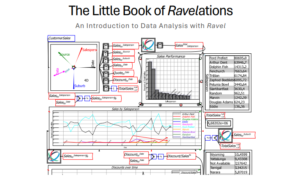To examine what causes inflation, we must first define what inflation is, and believe it or not, there is some disagreement here.
Table of Contents
Definitions of inflation
The common idea between various definitions can be boiled down to…
An increase in the cost of living over time as the prices of goods and services rise.
Some definitions talk about “the decline of purchasing power“.
Others talk about “any increase in the general price level“.
Others still…. “collective increases in the supply of money, in money incomes, or in prices“.
How we measure inflation
The way we commonly measure inflation is to create an arbitrary “basket of goods and services”, track the prices changes of the various things in the basket over time, and create an average price increase relative to everything in the basket.
So, what’s in the basket?
In the United States, the measure used is the Consumer Price Index (CPI) and is created by the Bureau of Labour Statistics (BLS) and is intended to contain things used by urban consumers, representing 93% of the US population.
They’ve defined a basket of 80,000 items.
Which includes gasoline, apples, doctor’s visits, telephone and cable services, etc.
Not everything in the basket is considered to be of equal importance, so each item has an assigned “weight” meant to reflect how important each item is.
How important means how many people buy it.
I can guarantee you without even bothering to look it up, that due to technological innovations and effective marketing, over the past 20 years the importance of bacon has increased while the importance of DVDs has decreased.
The BLS updates the CPI every month after conducting two surveys every month.
In one, they find out how much things cost across the country.
In the other, they find out what it costs to rent housing, or, and I find this particularly interesting, in the case of people who own homes, what they could rent their home for if they wanted to.
But we do understand what causes inflation? Right?
Well, there are competing theories, some of which are actually known to be false but are STILL used by people making public policy.
Others are interesting, may describe reality well, but seem to get very little respect.
How can there be so many theories of inflation?
How can there be so many schools of economic thought?
In science, when a new idea disproves an older one, the older one goes away.
In economics, when a new idea disproves an older one, they both move forward in parallel.
Take for example that one of the foundational ideas of neoclassical economics is that people within an economic system act as rational agents.
That is we use logic and intellect to decide what to buy, when to buy it, how much to save, etc.
Now, if someone was to come along, and maybe was awarded the Nobel Prize in Economic Science for demonstrating that this just ain’t so, you might expect that this entire school of economic thought, having been built on a now-discredited idea, to be quickly discarded as people accepted the evidence for which the Nobel Prize was awarded.
But, hey, it’s only been 4 years, and these things take time.
And, that seems to be the history of economics, to date.
New ideas create new schools of thought, while the older ones continue in parallel, independent of whether the foundational ideas of the older school have been demonstrated to be false, or not.
And how many theories of inflation are there?
I’m aware of six, two of which kind of go together, so I kind of know of five. They are:
- Monetarist, or Quantity of Money Theory
- Market Power Theory
- Demand Pull and Cost Push Theories
- Structural Theory
- Rational Expectations Theory



